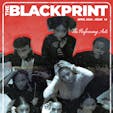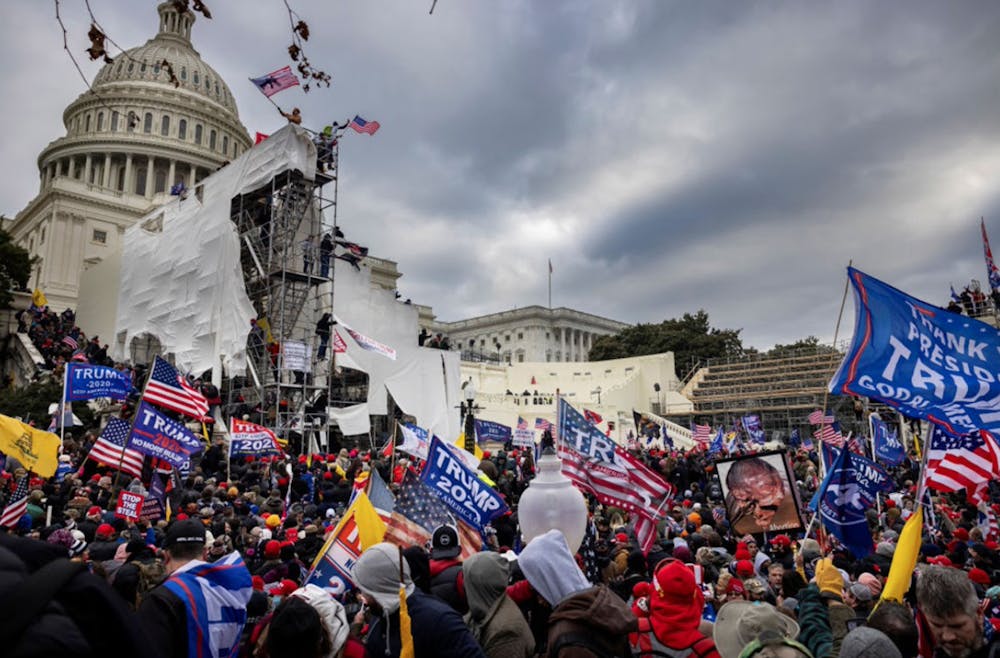I am a young Black woman who was born and raised here in the United States. From an early age, I always paid close attention in my history classes and took good notes, and it’s because of this that I know the following truth: Attacks against our democracy are far from new.
From the time of the Revolutionary War all the way up to the present day, this country has a long history of facing outside forces that sought to destroy the democracy we worked so hard to build.
And as we have faced these threats, we have always made a point of being decisive in our response to them. For example, on Dec. 8, 1941, the day after the devastating Japanese-led attack on Pearl Harbor, President Franklin Delano Roosevelt addressed a joint session of the U.S. Congress. In his speech urging Congress to declare war on Japan, he described Dec. 7, 1941, as “a date which will live in infamy.”
In clear agreement with this statement, Congress did indeed declare war, and the US found itself entering World War II. Most Americans were in full support of the war effort, feeling that their democratic values and way of life had been threatened by the plotting of countries beyond the wind-tossed sea. This seems like a natural response, expected, even.
But what is a country, particularly its ordinary citizens, supposed to do when an attack comes from within?
That’s exactly the position America found itself in on January 6, 2021, when hundreds of violent, angry Americans stormed the nation’s capital. It’s important to remember that many of the people there weren’t just Trump supporters. There were members of the Proud Boys, the Oath Keepers, NSC-131, and many other right-wing extremist groups.
Millions of Americans stared incredulously at their TV screens as this mob screamed out obscenities, waved Confederate flags, beat back Capitol police, and shattered windows as they forced their way into the U.S. Capitol building. They then went door to door, trashing the offices of senators and representatives alike as they chanted hateful slogans and insisted that Former President Donald Trump had been the true winner of the 2020 Presidential Election. Some members of Congress were forced to run for cover as the rioters attempted to break into the House Chamber. Other lawmakers found themselves sheltering in place in different areas around the Capitol. Staffers barricaded themselves in their offices, using furniture to bar the doors in an attempt to keep the mob at bay.
Every video and image that came out of the Capitol insurrection was more stunning than the last. Rioters dangling off of balconies, rioters stalking about the Senate Chamber, rioters luxuriating in official offices and chairs that belonged to their elected officials. It was horrifying for any American to bear witness to. Yet, it contained a heightened degree of terror when viewed through the eyes of a person of color.
I remember how my heart started to race as the headlines continued to stream in on that frenzied day. Living in Arlington, a mere 20 minutes outside the Capitol, I feared that the violence would spread to us any second. I remember frantically texting all my friends of color, asking if they were inside their houses. I told them, like other people of color were telling me, to close the blinds, stay away from the windows, and turn off all the lights. I remember begging a friend to take down all of the LGBTQ+ flags and Black Lives Matter signs she had proudly displayed in her front yard, and I remember how scared I felt when she blatantly refused to do so.
Of course, the riots did come to an end, but that doesn’t mean their impact did not leave the country irrevocably changed. Americans feared a civil war, or worse, a complete collapse of our already struggling democracy. But some people, in particular, feared particularly grisly, personal fates. These differing experiences of living in a post-January 6, 2021 world as someone who didn’t work for the government were unmistakably divided into the lines of race.
Most white Americans who didn’t work for the government came away from January 6, 2021 feeling like their country had been threatened and its stability was at risk. Most Americans of color who didn’t work for the government came away from January 6, 2021, fearing for their lives. Many of the rioters had proudly displayed Confederate symbols and flags for all the world to see during the course of the riot. Additionally, even before they stormed the Capitol with such items, Trump supporters and members of the extremist groups present had long since been tied to racist rhetoric and threats of violence against people of color all across the country.
Whenever I had to be out in public following the riots, I tried to make myself small. I didn’t answer questions about my political allegiances. I didn’t answer questions about what my opinions were on the riots. When I finally dared to once again start going on evening walks further away from my neighborhood as I had previously loved to do, whenever I saw any sort of Trump flag I immediately turned around and walked away. I didn’t feel safe. If extremists, fascists, and Trump supporters had gotten to the point where they were willing to seek out and attack white Democrats who had the protection of a police force, what on earth would they be willing to do to me, a person the police had never been concerned with protecting?
We are living through an intense revival of extremism in America, where the brunt of its insidious effects comes squarely to rest on the shoulders of Black and brown people. Contrary to popular belief, white Americans cannot do their part by simply not being racist- now more than ever, we Americans of color need our white counterparts to be anti-racist. White America needs to speak up and bring forth a reckoning the likes of which has never been seen before. They must publicly denounce the events of the Capitol riots, AND the racism, extremism, and fascism that led to those riots happening in the first place. They must raise their children not to harbor racist thoughts and ideals AND to speak up against the racist actions of others if they see instances of racism occurring. The only way out of the hole America has dug itself into is for actively antiracist white individuals to join forces with individuals of color and create an environment in which racism isn't just frowned upon; instead, it isn't tolerated, period.
I truly hope that I'll see this come to pass in my lifetime- but it isn't up to me. White America, it's up to you.
Make the right choice. Break the cycle.
Then, and only then, will we as a nation be able to heal!



